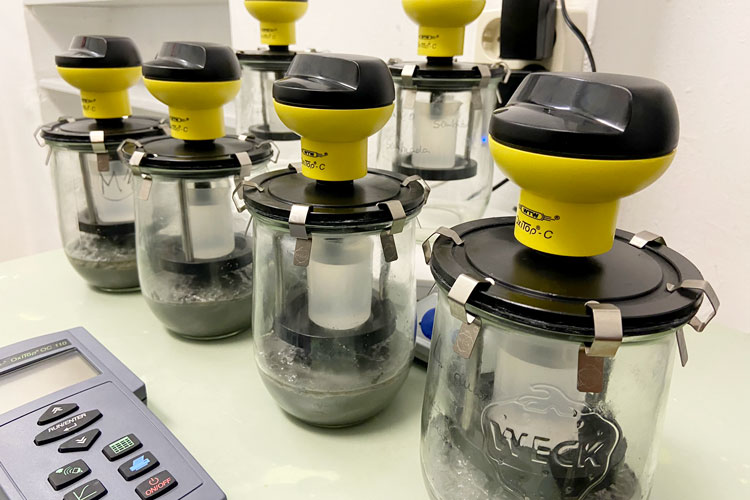Experts from IQS and ATLAS GESTIÓ MEDIAMBIENTAL S.L.present to the Waste Agency of Catalonia (ARC) the results obtained in the development of their methodology to identify in a precise and scientific way the biodegradable matter of the waste and, therefore, optimize their management.

IQS and ATLAS GESTIÓ MEDIAMBIENTAL S.L.have established a collaboration agreement, through which they have developed an analytical methodology to reliably determine the biodegradability of organic matter present in hazardous waste, based on the aerobic respirometric index. Specifically in reference to this parameter, it is possible to determine if a particular sample of waste is suitable to be managed in a hazardous waste tank: for proper waste management in a tank with features like the one in Castelloli, it is necessary for the waste to achieve a high level of stability, to reduce its environmental impact (odour generation, self-heating, self-combustion, biogas production, leachate generation and pathogen regrowth) and to thus be able to ensure that the waste is not biodegradable, among other parameters.
Analytical methodology
The methodology developed in this collaboration consists of determining the quantity of biodegradable organic matter present in the waste through the OxiTop® Control system, based on determining the aerobic respirometric index, or the AT4 parameter, in solid phase.
The AT4 respirometric index is a reference parameter that measures the biodegradability of a solid sample. This parameter is already defined in different European countries like Germany, Austria, and Ireland. The procedure is based on the manometric measurement of oxygen consumption to degrade the organic matter present in the sample (organic matter consumes oxygen and generates CO2). Given that these are solid samples with very low respiratory activity, the measurement is made in a hermetically sealed 1L recipient with a significant quantity of the sample, at a constant temperature and volume.
The suitability of the proposed method is measured with glucose/glutamic acid patterns. To implement the method, different hazardous wastes have been analysed, obtaining highly reproducible results in most of the samples. In all cases, the values have been well below the legal limits in other European countries to allow for hazardous wastes to be placed in controlled tanks. Therefore, these values indicate that the samples analysed are sufficiently stabilised and can be put into controlled tanks, according to the established criteria.
Presentation of the results to the ARC
Recently, experts from IQS and ATLAS GESTIÓ MEDIAMBIENTAL S.L. presented the results obtained in this study to the Catalan Waste Agency (ARC), the public body of the Department of Territory and Sustainability of the Government of Catalonia, which is responsible for managing the waste in this Autonomous Community.
The goal of the presentation was to raise awareness of the methodology to determine the aerobic respirometric index, as a form of measuring the biodegradability of organic matter in waste, in the cases where this parameter is required in order to manage the waste.
The ARC is highly interested in this type of work and will be very attentive to the results, given that it will allow biodegradable material to be identified in a precise and scientific manner from the waste and to thus optimise waste management.
ATLAS GESTIÓ MEDIAMBIENTAL, S.K. manages the only controlled hazardous waste site in Catalonia, an activity declared to be of public service by the Government of Catalonia. In the words of its director, Mr Xavier Mundet, “these studies conducted by IQS give us the managerial and decision-making tools to improve our understanding of any type of waste before it is managed in a controlled tank. Having this type of information can clearly help manage the controlled tank”.










